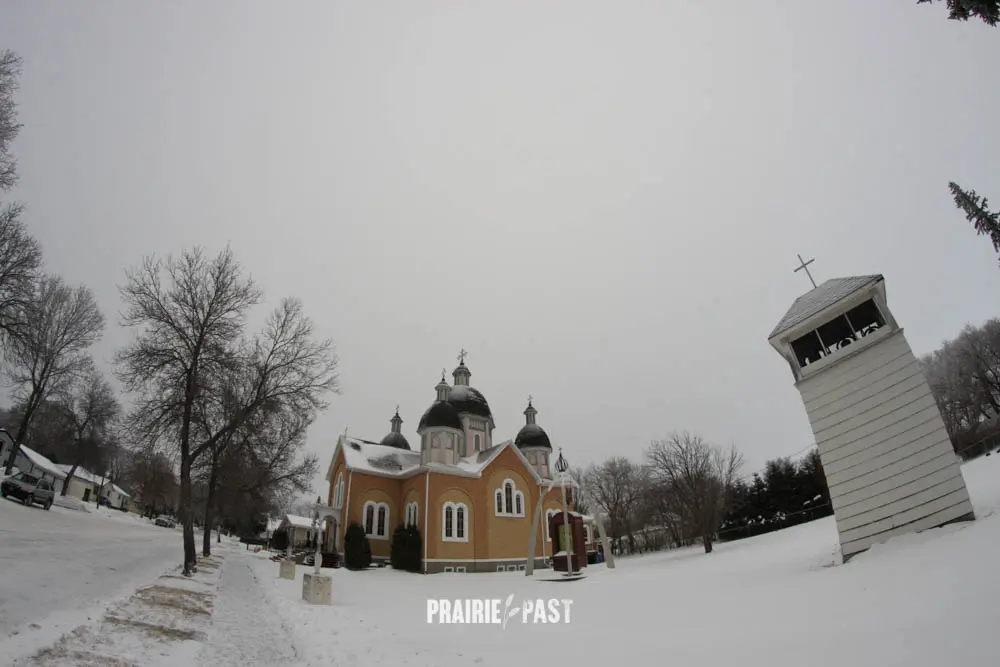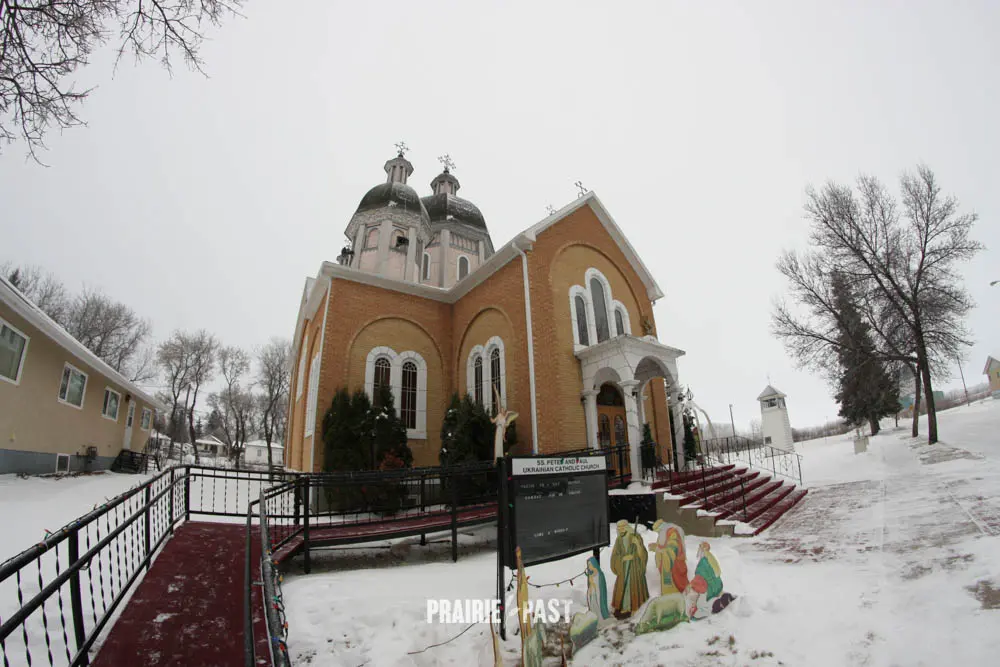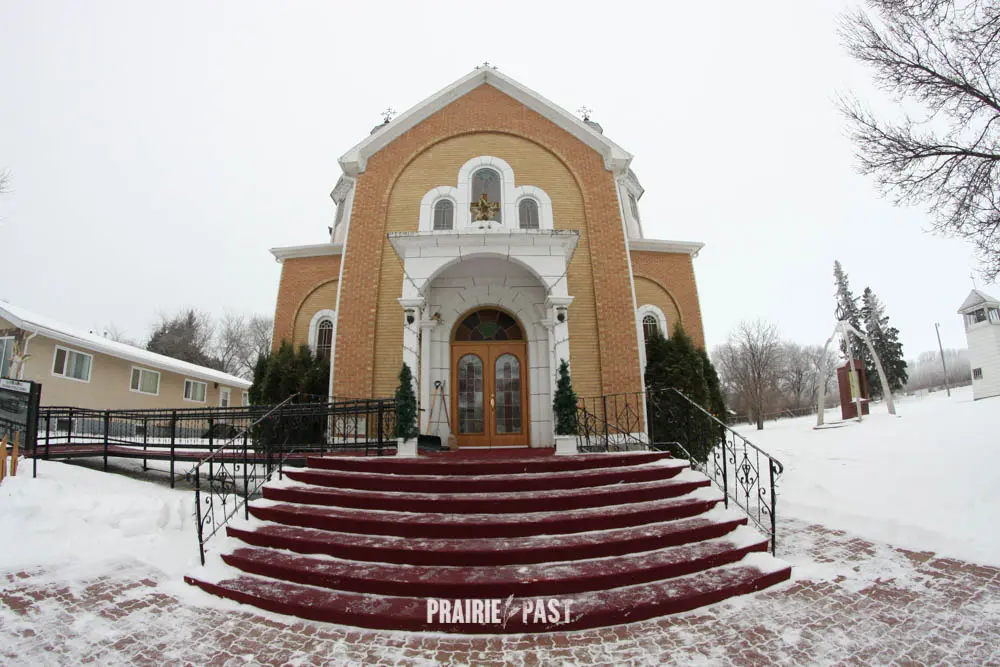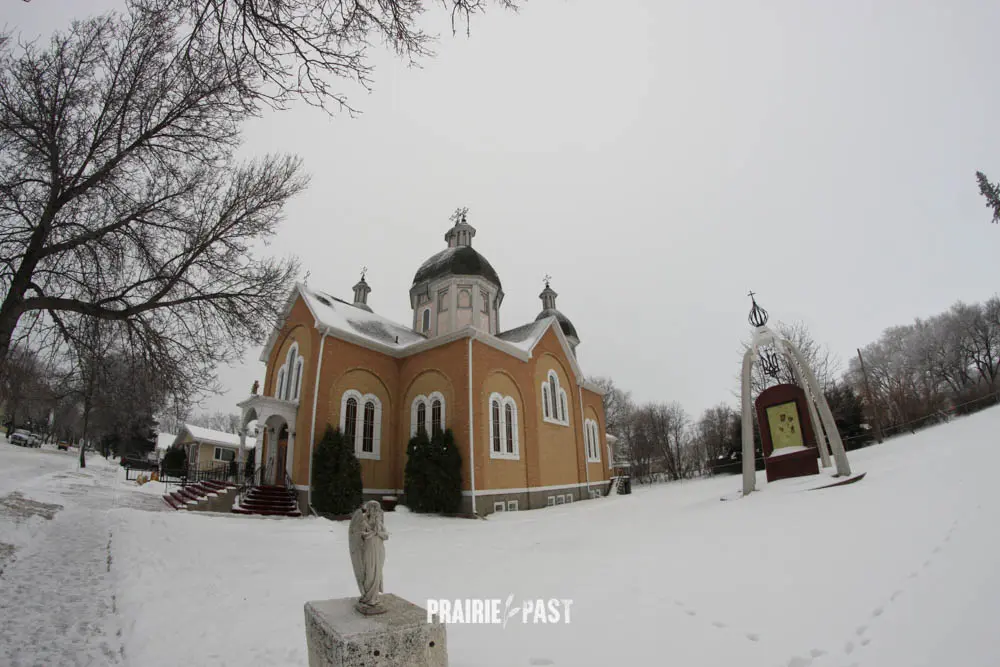Saints Peter & Paul Ukrainian Catholic Church, Canora, Saskatchewan
Nestled in the heart of Canora, Saskatchewan, Saints Peter & Paul Ukrainian Catholic Church stands as a vibrant testament to Ukrainian faith, culture, and prairie ingenuity. More than just a place of worship, it has been a community anchor through changing times, aspirations, and generations.
The story of this parish begins in the early 20th century, when Ukrainian settlers moved into the Canora area from regions like Volhynia, Bukovyna, and Halychyna. These pioneers brought with them their deep faith and traditions, and much of the church’s early activity reflects a community working together to establish a permanent spiritual home.
In 1917, under Rev. Nestor Drohomyrecki, congregation members built a concrete basement to hold services (until 1922). Although the full structure was not completed then, this basement shows how determined the early members were to have a worship space of their own.
By 1932, under Rev. Andrew Sarmatiuk, the parish purchased a building and modified it to meet their worship needs. This building served the community for about thirty years
Between 1960 and 1964, the parish built the current Saints Peter & Paul church under the leadership of Rev. Peter Kryworuchka. It was blessed on July 12, 1964, by Bishop Andrew Roborecki.
Some of its architectural highlights:
- It’s a cruciform plan (a cross‑shape floor layout) building made of iron, concrete, and brick, measuring about 100 x 50 feet. skeparchy.org
- It features five domes: one large central dome and one over each arm of the cross. These are covered with dark copper sheeting, topped with cupolas and ornate metal crosses.
- The windows are narrow, rectangular with semi‑circular tops, grouped in twos or threes; in three‑window groupings the central window rises above the two flanking it.
- The interior is richly decorated: domed vaulted ceiling, large patron icons (Saints Peter & Paul behind the main altar), the Blessed Virgin Mary, the Resurrection, Greek crosses, Holy Spirit symbols, etc. In 1971, artist Ivan Denysenko did much of this decorative work.
Additional buildings support the parish life: a belfry (with three bells, original from 1938), the parsonage (new one built in 1972), and across the street a parish hall (“Prosvita” hall) built in 1934 and renovated later.
Saints Peter & Paul is more than just its building; it’s a hub for community, tradition, and generations of faithful:
- The parish became the seat of spiritual leadership for the area, also administering the nearby Antonivka parish.
- It hosts active groups like the Ukrainian Catholic Women’s League of Canada (UCWLC), Ukrainian Catholic Brotherhood (UCBC), Ukrainian Catholic Youth (UCY), choir and cultural groups, catechism classes, etc.
- In 2016, it was designated a pilgrimage site during the Jubilee Year of Mercy, and a Holy Door was consecrated. This indicates both recognition of its importance and its role in inviting people into deeper spiritual experience.
Saints Peter & Paul Church is significant on multiple fronts:
- Architecturally, it blends modern construction with centuries‑old Ukrainian church styles (five domes, Greek‑cross plan), a beautiful example of how immigrant communities preserved tradition even as they used new materials and techniques.
- Culturally, it has housed not just religious services but language, music, art, and social life: icons, liturgies, cultural events, community gatherings.
- Historically, it charts the story of settlement, adaptation, growth, and continuity: from humble basement or temporary buildings to a completed church, through decades of serving families, navigating challenges, and keeping traditions alive.




